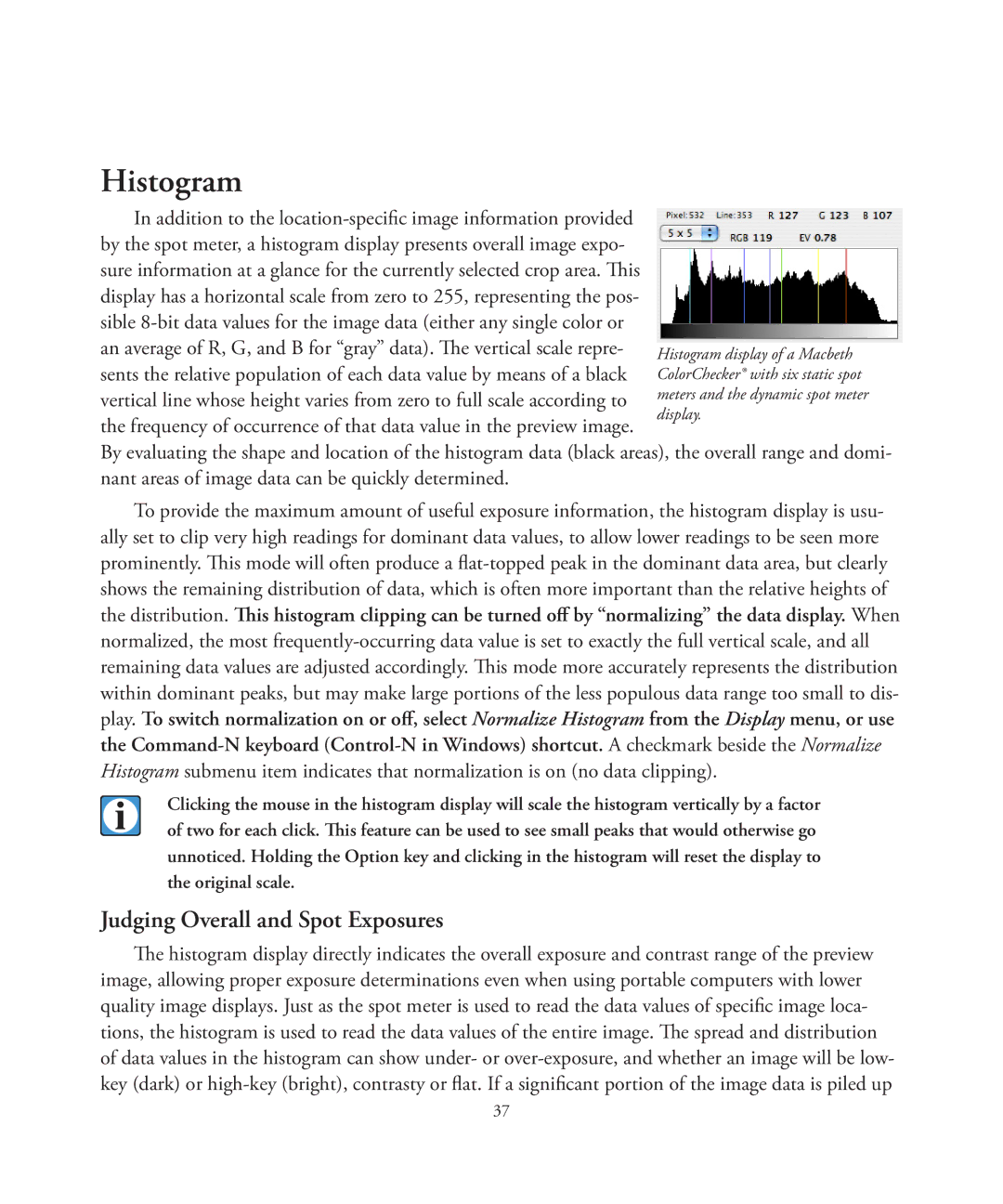Histogram display of a Macbeth ColorChecker® with six static spot meters and the dynamic spot meter display.
Histogram
In addition to the location-specific image information provided by the spot meter, a histogram display presents overall image expo- sure information at a glance for the currently selected crop area. This display has a horizontal scale from zero to 255, representing the pos- sible 8-bit data values for the image data (either any single color or an average of R, G, and B for “gray” data). The vertical scale repre- sents the relative population of each data value by means of a black vertical line whose height varies from zero to full scale according to the frequency of occurrence of that data value in the preview image.
By evaluating the shape and location of the histogram data (black areas), the overall range and domi- nant areas of image data can be quickly determined.
To provide the maximum amount of useful exposure information, the histogram display is usu- ally set to clip very high readings for dominant data values, to allow lower readings to be seen more prominently. This mode will often produce a flat-topped peak in the dominant data area, but clearly shows the remaining distribution of data, which is often more important than the relative heights of the distribution. This histogram clipping can be turned off by “normalizing” the data display. When normalized, the most frequently-occurring data value is set to exactly the full vertical scale, and all remaining data values are adjusted accordingly. This mode more accurately represents the distribution within dominant peaks, but may make large portions of the less populous data range too small to dis- play. To switch normalization on or off, select Normalize Histogram from the Display menu, or use the Command-N keyboard (Control-N in Windows) shortcut. A checkmark beside the Normalize Histogram submenu item indicates that normalization is on (no data clipping).
Clicking the mouse in the histogram display will scale the histogram vertically by a factor of two for each click. This feature can be used to see small peaks that would otherwise go unnoticed. Holding the Option key and clicking in the histogram will reset the display to the original scale.
Judging Overall and Spot Exposures
The histogram display directly indicates the overall exposure and contrast range of the preview image, allowing proper exposure determinations even when using portable computers with lower quality image displays. Just as the spot meter is used to read the data values of specific image loca- tions, the histogram is used to read the data values of the entire image. The spread and distribution of data values in the histogram can show under- or over-exposure, and whether an image will be low- key (dark) or high-key (bright), contrasty or flat. If a significant portion of the image data is piled up

